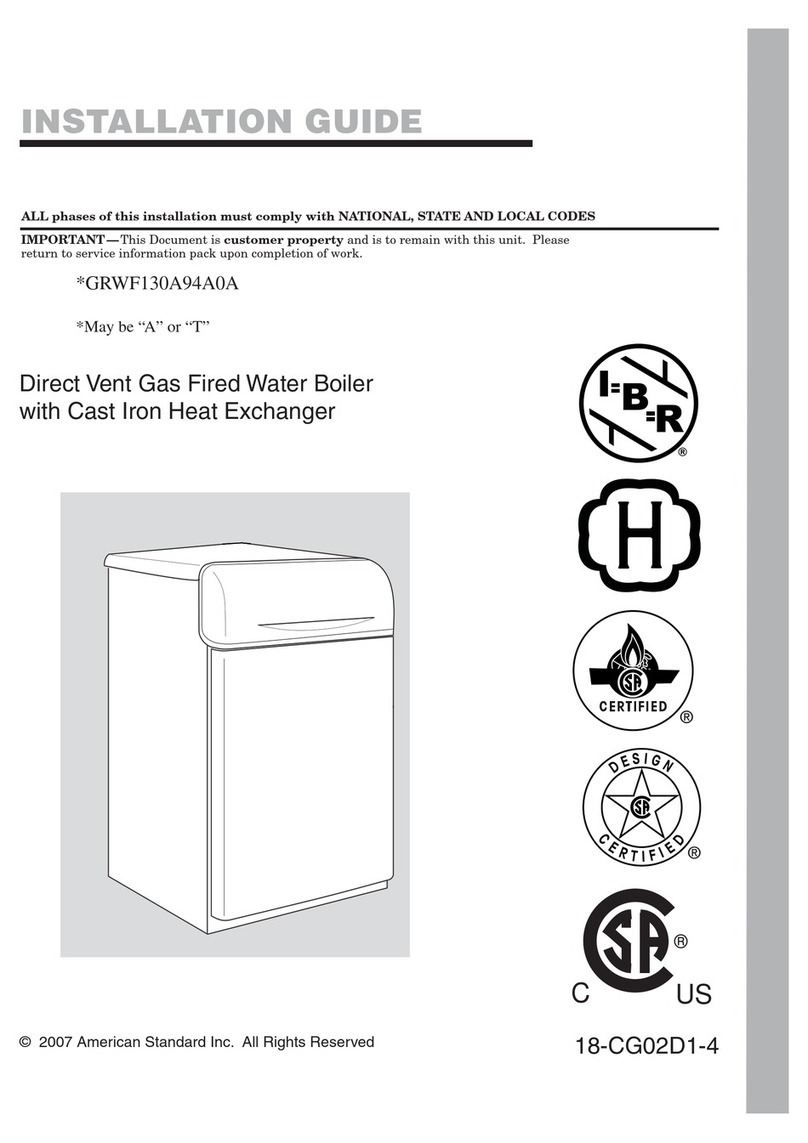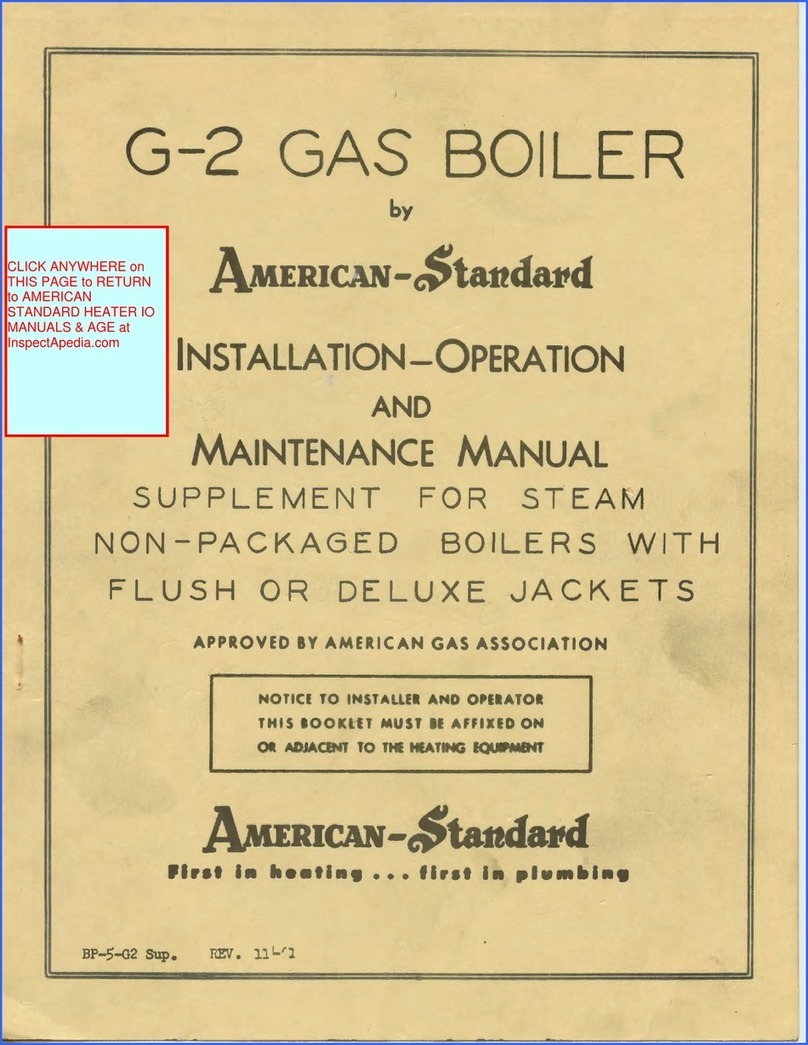18-CG01D1-4
8
2.3 Codes & Regulations
The manufacturer requires installation and services
be in compliance with all applicable codes.
Codes and local utility requirements governing the
installation of gas fired equipment, wiring, plum-
bing, and flue connections must be adhered to. In
the absence of local codes, the installation must
conform with the
a) National Fuel Gas Code ANSI Z223.1 “latest
edition” or CAN/CGA B149 Installation Codes.
The latest code may be obtained from the
American Gas Association Laboratories, 400 N.
Capitol St. NW, Washington D.C. 20001
1-800-699-9277 or www.aga.org
b) Standard for Controls and Safety Devices
for Automatically Fired Boilers, ANSI/ASME
CSD-1 where required.
c) National Electric Code
These boilers have been classified as CATEGORY
I as required by ANSI Z21.47 “latest revision” and
CAN/CGA 2.3. Therefore they “do not require any
special provisions for venting other than what is
indicated in these instructions.”
It is recommended that Manual J of the Air Con-
ditioning Contractors Association (ACCA) or A.R.I.
230 be followed in estimating heating requirements.
When estimating heating requirements for installa-
tion at Altitudes above 2000 ft., remember the gas
input must be reduced (See High Altitude Derate
section 3.9).
2.4 Locations & Clearances
▲
WARNING
!
WATER SAFETY HAZARD
DO NOT USE THIS UNIT IF ANY PART HAS
BEEN UNDER WATER. IMMEDIATELY CALL
A QUALIFIED SERVICE TECHNICIAN TO INS-
PECT THE BOILER AND TO REPLACE ANY PART
OF THE CONTROL SYSTEM AND ANY GAS CON-
TROL WHICH HAS BEEN UNDER WATER.
FAILURE TO FOLLOW THIS WARNING COULD
RESULT IN SERIOUS INJURY, DEATH, OR PRO-
PERTY DAMAGE
a) Location Considerations
The location of the boiler is normally selected by
the architect, the builder, or the installer. Before
the boiler is moved into place, be sure to consider
the following requirements:
1. Is the location selected near the chimney or
vent?
2. Do all clearances between the boiler and the
enclosure equal or exceed the minimum clearan-
ces stated in the clearance table on page 9?
3. Is there sufficient space for servicing the
boiler and other equipment? A minimum of 36”
front and top accessibility to the boiler must be
provided. Any access door or panel must permit
removal of the largest component.
4. Are the ventilation and combustion air ope-
nings large enough and will they remain unob-
structed? If outside air is used, are the openings
set above the highest snow accumulation level?
(See page 18 for Combustion and Ventilation
section.)
5. The boiler is approved for installation directly
on combustible flooring. Do NOT install on
carpet.
6. Ensure the floor structure will support the
weight of the boiler.
7. Locate the boiler so that all system compo-
nents are protected from water damage during
operation or service.
8. In some applications, boilers may need to
be raised above the floor level on a solid struc-
ture capable of supporting the boiler in order to
reduce the risk of water damage.
9. In garage applications, refer to ANSI Z223.1
for guidance.
10. All boilers installed above the level of heat
emitters must have a low water cut-off device
installed. Refer to National, State or Local codes
for guidance.
11. Scaling of only 1/8 inch can increase annual
boiler operation cost by 20-25% and lead to over
heating of the boiler sections and premature fail-
ure of the boiler’s heat exchanger. Water hard-
ness is a result of high concentrations of Calcium
and Magnesium suspended in water that become
non-soyable as water is heated. The installing
dealer is required to test boiler’s water source for
water hardness. Water hardness greater than
14 grains per gallon of water will require water
treatment to reduce the affect of the hard water
on the boiler.






























